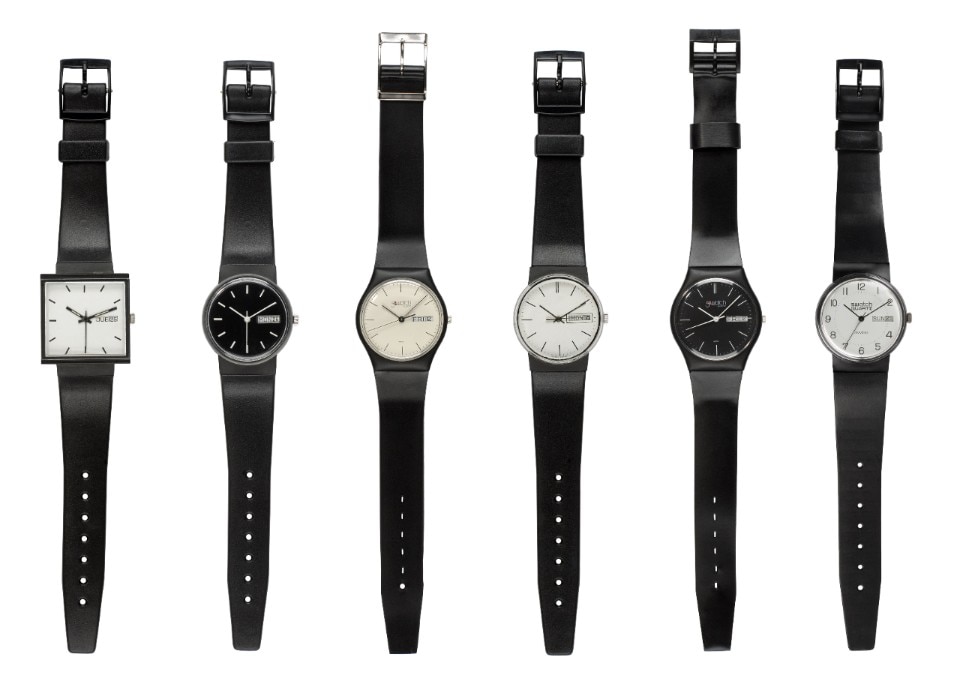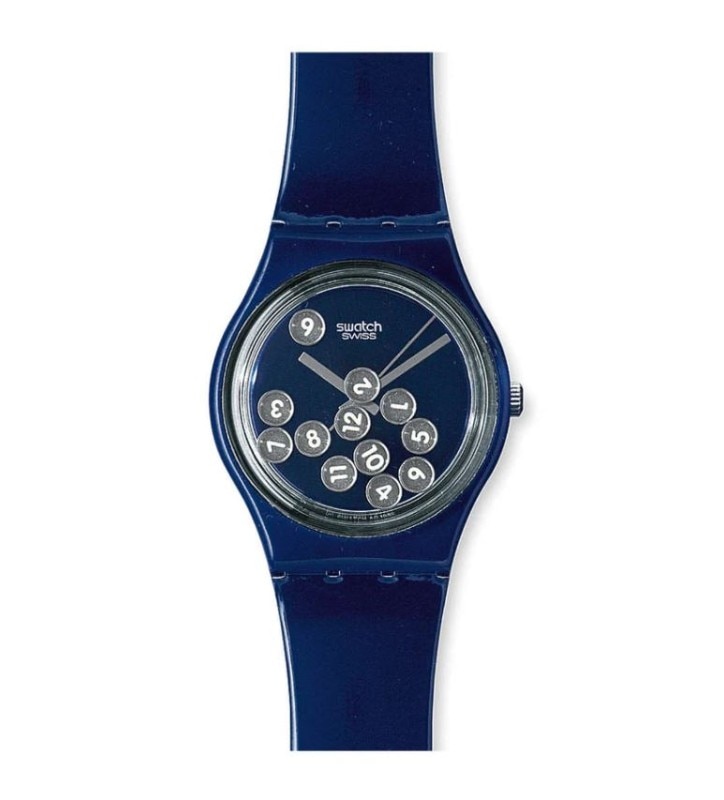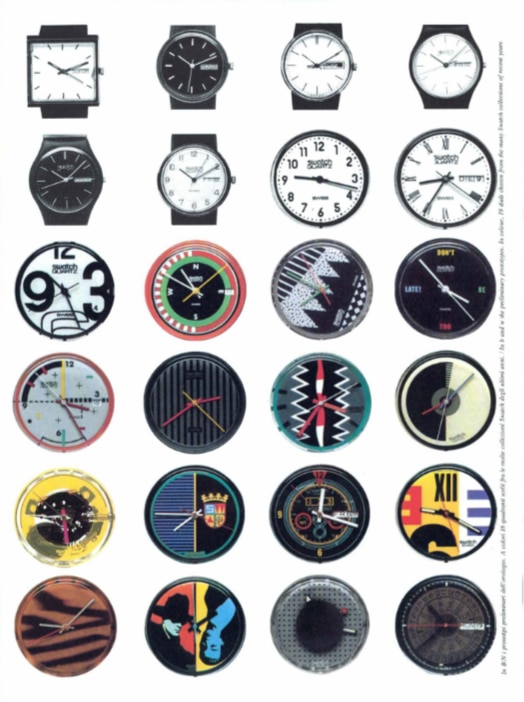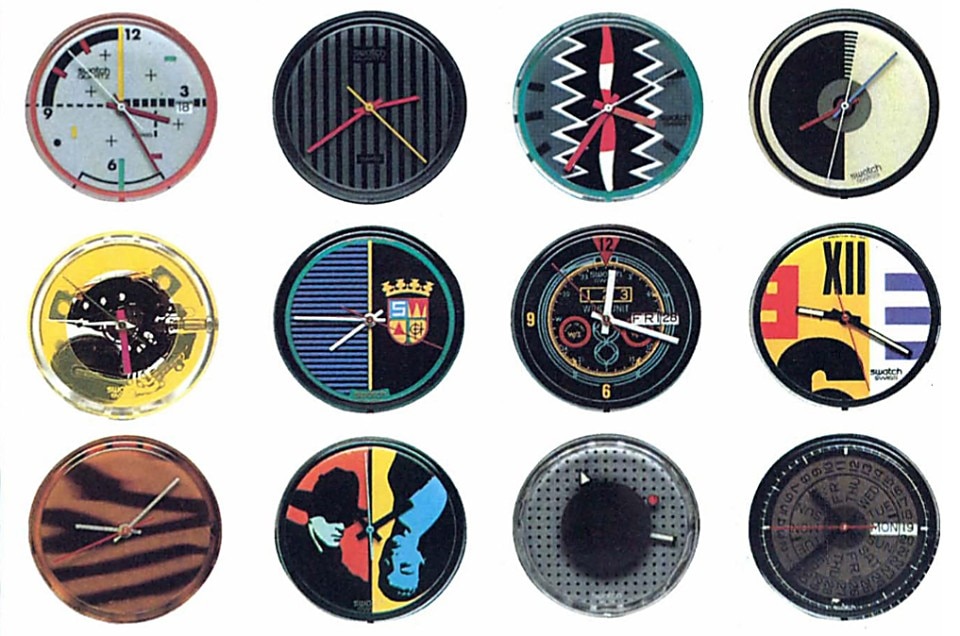To describe the wristwatch as merely a portable time-keeping device is rather reductive: throughout history, it has been a status symbol. A sign of identity. An objective correlative of the wearer’s personality and character. In short, a communicative artifact. Even in the early 1970s, Swiss watches, in particular, were products of complex and labor-intensive craftsmanship passed down through generations. Their cost was far from affordable for many.
Then, almost out of nowhere, the market was flooded with quartz watches from Asia: they cost little and measured time as well as expensive Swiss-made mechanical watches. This unforeseen wave dealt a severe and irreversible blow to Swiss watchmaking. The industry faced a crisis with a staggering 35 percent loss in market share, resulting in over 65,000 jobs vanishing within a few months.

In the midst of this worrying situation, in the early 1980s, a manager named Nicolas G. Hayek, hired by a group of Swiss banks to manage the liquidation of two ailing watch companies, came up with a groundbreaking idea. He envisioned merging quartz watchmaking technology with the renowned Swiss tradition, known for its practicality, and durability, all while achieving cost-effectiveness. Hayek set out to develop a technology that would significantly reduce the watch’s thickness, drastically decrease the number of components required (by more than half), and create a perfectly waterproof and water-resistant timepiece.
And thus, Swatch was born – a result of technological innovation, manufacturing experimentation, the use of a new material, plastic, and finally bold and imaginative marketing strategies. The origin of the name “Swatch” remains a subject of debate: some believe it is a fusion of “Swiss” and “watch”, while others interpret the initial “S” as representative of “second”, alluding to the concept of Swatch as a “second watch”.
In November 1983, exactly 40 years ago, the first Swatch was sold, marking the beginning of a remarkable journey. Within just two months, in January 1984, more than one million Swatch watches had been sold. Astonishingly, within a year, the number had risen to 10 million. Ten years after its launch, in 1992, Swatch had sold more than 100 million units. These figures were truly extraordinary, especially when compared with the annual production figures of the most prestigious traditional watchmakers, which ranged from 20,000 to 25,000 watches. Swatch won because it introduced two highly innovative elements into the rather exclusive world of wristwatches: democracy and imagination.
Indeed, Swatch embraced democracy by making its watches accessible to all, breaking away from exclusivity. On the other hand, the brand’s imagination was evident in its departure from the austerity of traditional watch design and its use of vibrant colors, images, and innovative marketing strategies. As early as 1984, for example, a giant Swatch with an orange strap, over 100 meters high, was placed on the Commerzbank building in Frankfurt, one of the most prestigious and important buildings in Germany. This bold move symbolized Swatch’s intention to bring playfulness and cheerfulness where previously there had been only seriousness and sobriety.
Swatch won because it introduced two highly innovative elements into the rather exclusive world of wristwatches: democracy and imagination.
While Swatch watches were originally made of plastic, over time the company’s designers experimented with a variety of materials, including synthetic fabrics, rubber, aluminum, and silicone. This innovation in materials led to a myriad of new colors and made Swatch the epitome of a wearable and “talking” watch. Cheerful, loud, smiling. Unisex and cross-generational. Some even wore three or four simultaneously. The way a Swatch was worn on the wrist conveyed additional communicative meaning. As the brand expanded its horizons, it pushed the boundaries of creativity, constantly experimenting and innovating. Among the many iconic models, the transparent Jelly Fish attracted attention, as did the delightful Raspberry, Ice Mint, and Banana designs, which had a unique twist – they actually smelled of raspberry, mint, and banana.

As a chic fashion accessory, Swatch began a vibrant dialog with the art world. The first artist to collaborate with Swatch was Kiki Picasso in 1984, followed by Keith Haring, who created a series of prototypes in the mid-1980s and then four Swatches showcasing his designs. Other artists, designers, architects, and filmmakers who have collaborated with the brand include Jean-Michel Folon, Mimmo Paladino, Mimmo Rotella, Akira Kurosawa, Spike Lee, David LaChapelle, Moby, and Renzo Piano.
Since 1990, Alessandro Mendini has been Swatch’s Art Director, creating several Art Special watches with his punctuated, colorful design, but also encouraging the collaboration of other artists. One notable example is the involvement of the 90-year-old maestro, Bruno Munari, whom Mendini persuaded to embark on a limited-edition project called Tempo libero – an artistic masterpiece in which twelve “unruly” plates with the twelve digits can move freely and rearrange the hours according to the wrist’s movements, playing with our frenetic perception of time. This innovative creation challenges us to rethink the importance of knowing the exact time and instead encourages us to free time from the constraints that weigh it down.

Over the years, Swatch has fostered and deepened its relationship with art and major museum institutions worldwide. This commitment culminated in the Art Journey project, a significant initiative launched in celebration of the brand’s 40th anniversary. The Art Journey takes us on an artistic voyage through time, from the 15th to the 20th century, drawing inspiration from diverse styles and movements – from Botticelli and Lichtenstein, to the Renaissance and Pop Art, and even encompassing the prints of Hokusai and the surrealism of Magritte. The works of these artists are reproduced on watch straps. By doing so, Swatch aims to make art “more accessible and democratic”, bringing it to the streets, close to people.

But this is only one of the many projects that Swatch has created. In the first 40 years of its existence, the company has designed and produced more than 5,000 different watches. Despite its uniqueness, each Swatch model remains rooted in the same original and innovative design matrix. Swatch stands as a paradigmatic example of a contemporary object that masterfully blends individuality and mass production. Through its astute and intelligent approach, Swatch has managed to captivate the collective imagination, playing with the currents of desire that resonate within society.



.png.img.png/1690814882951.png)

.png.foto.rmedium.png)
.png.foto.rmedium.png)
.png.foto.rmedium.png)
.png.foto.rmedium.png)